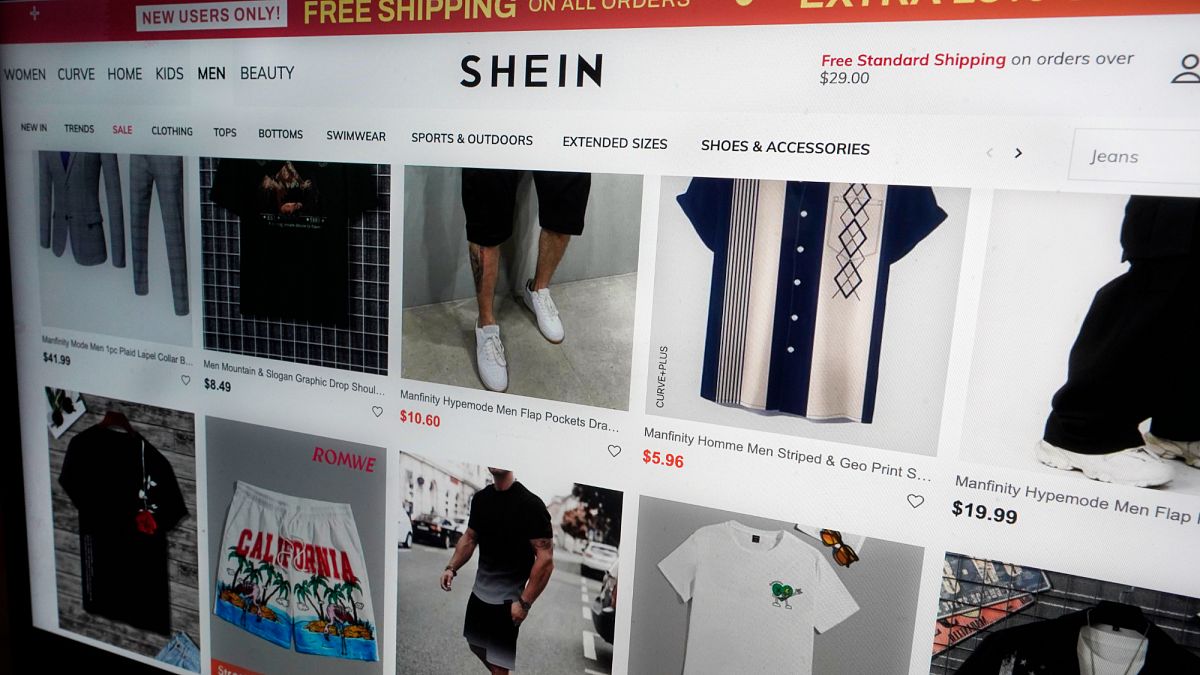“This item is now cheaper by €0.50! Hurry!”, “Sure to leave? You will lose €200 reward”, or “FREE SHIPPING – don’t miss out!” These are just some of the messages with which clothes retailer Shein bombards its users in an effort to nudge them into buying more, according to consumer rights group BEUC.
While such aggressive sales tactics are not necessarily illegal in themselves, they could cross the line when combined with other forms of manipulation, BEUC argued in a formal complaint for unfair practices filed on Thursday with the European Commission and the Consumer Protection Cooperation Network (CPC).
They are calling on the European Commission and consumer protection authorities to ask SHEIN to stop using misleading tactics and to prove that the information on its website is accurate.
The complaint targets the Chinese ultra-fast fashion giant for its widespread use of so-called dark patterns: deceptive design techniques that trick users into making choices they might not otherwise make.
They can be visual strategies designed to confuse, pressure or emotionally manipulate users. A classic example? Online travel booking sites that push add-ons through misleading wording, or highlight the “accept” button in bright colours while burying the “decline” option in grey.
BEUC warns that these tactics are rampant across the fast fashion industry, with even major european retailers like H&M and Zara also using similar methods. But Shein, they say, takes it to another level. “The analysis revealed that Shein was the most manipulative fast fashion trader, using at least eight different types of dark patterns -more than any other trader studied,” the report states, referring to an investigation by UK-based digital design agency Rouge.
With a reported $32 billion in revenue in 2023 and operations in over 150 countries, Shein’s strategy seems to be paying off. But as regulators turn the spotlight on Chinese e-commerce giants, this new complaint could mark a turning point, not just for Shein, but for how online shopping is regulated across the EU.
Trics & tactiques
Activity and low stock messages: Shein floods users with prompts like “2,000 sold” or “only 3 left” to stir up a sense of urgency. These alerts are designed to make shoppers feel like everyone’s buying and fast. Whether it’s showing what others just purchased or warning that stock is running low, the aim is the same: to nudge you into checking out before you’ve had time to think twice. BEUC highlights that in many cases, there’s no way to know if the rush is even real.
Countdown timers: Visual elements like ticking clocks or phrases implying deals will end soon are used to create artificial time pressure. These tools are designed to rush consumers into finalising a purchase by making them feel the opportunity is fleeting. Once again, it’s unclear whether or not the deadline is real.
Peer pressure through testimonials: By showcasing uniformly positive reviews and hiding negative feedback, platforms can manufacture a false consensus of satisfaction. The report observed that no product was rated under 4 stars out of 5 – and cast doubt on the veracity of those reviews.
Confirm-shaming and forced registration: Shein also ‘guilt-trips’, according to BEUC. Try leaving the site or skipping a discount, and you might be met with pop-ups asking, “Are you sure you want to miss out?” These messages play on emotion, making users feel silly or selfish for not accepting the offer. On top of that, you can’t just buy and go. To complete a purchase, you’re forced to create an account or sign in through Google or Facebook, handing over personal data before you can even reach the checkout.
The design choices such as highlighting preferred buttons or obscuring exit options subtly influence decisions. These visual nudges take advantage of emotional responses, guiding users toward outcomes they might not have chosen freely.
Infinite scroll: The interface continuously loads new content as users browse on the website and the app, making it nearly impossible to reach the end of the page. This technique keeps users engaged far longer than intended, drawing them deeper into the site as social media addictive technics.
Commission cracking down on Chinese online retail giants
Shein is already facing scrutiny from European regulators. Last week the European Commission and the network of national consumer protection authorities (CPC Network) slammed Shein for using fake discounts, manipulative pressure tactics and misleading claims, in breach of consumer laws and called for urgent redress.
The consumer protection advocates hope this complaint will go beyond addressing Shein alone but will feed into the Commission’s broader efforts to clean up e-commerce across the EU, especially as lawmakers debate the upcoming “Digital Fairness Act”.
Alongside these consumer law probes, Shein is under investigation for possible breaches of the Digital Services Act. The DSA probe focuses on algorithmic recommendation systems – how certain products are promoted to specific users – and the sale of illegal goods, such as items that fail to meet EU health and safety standards.
Shein has been approached for comment and this article will be updated.

